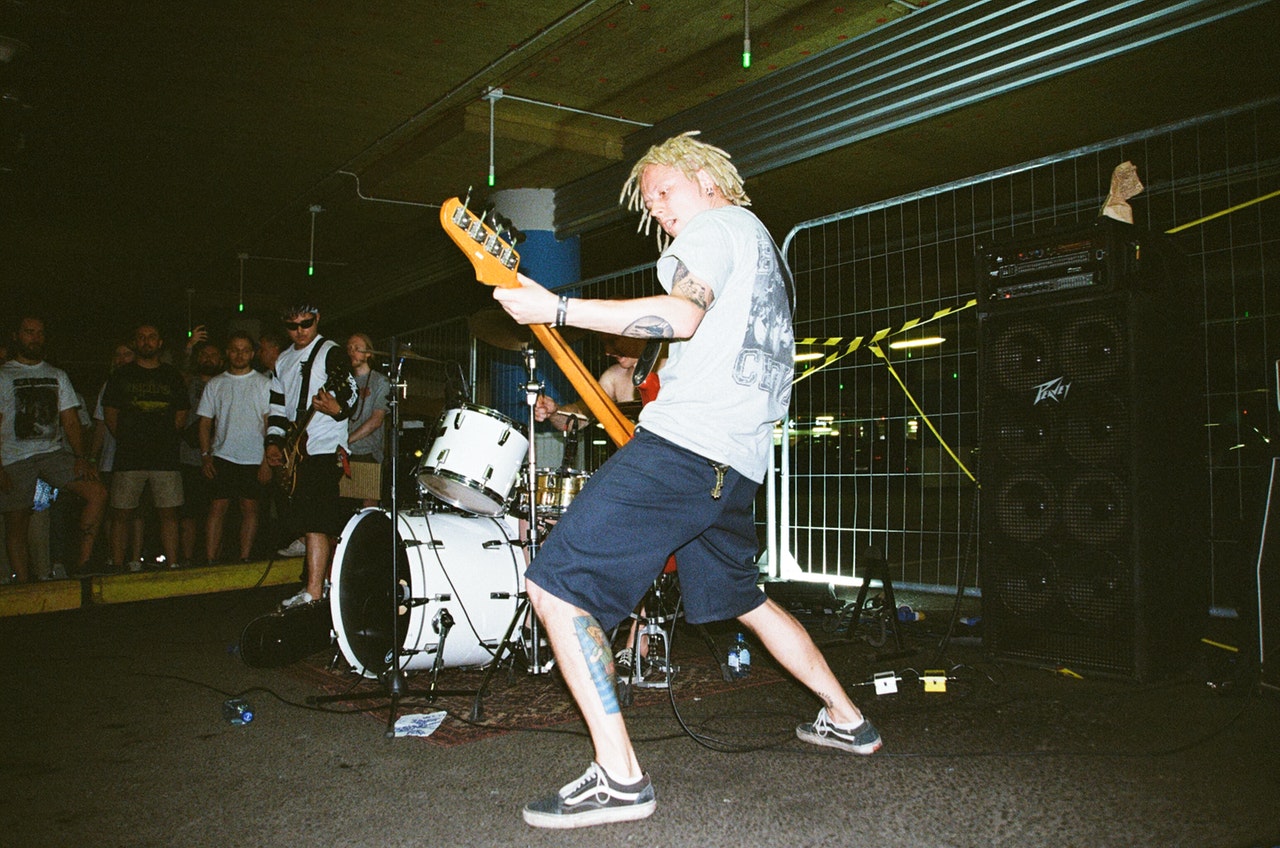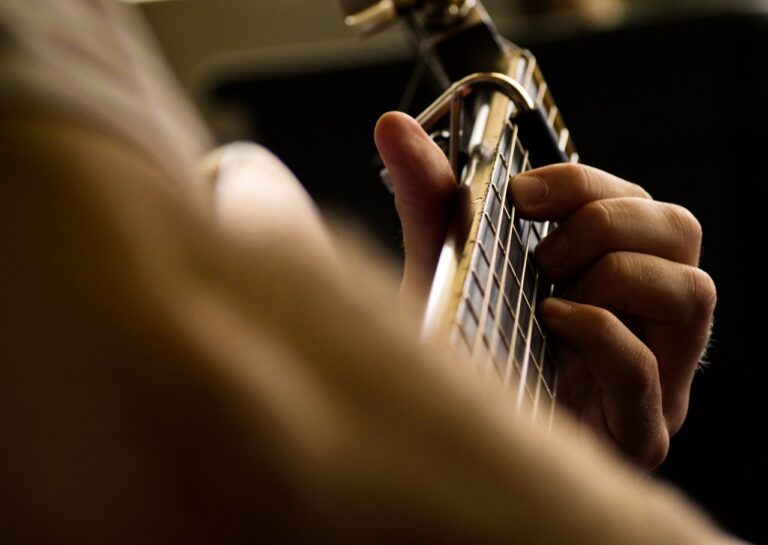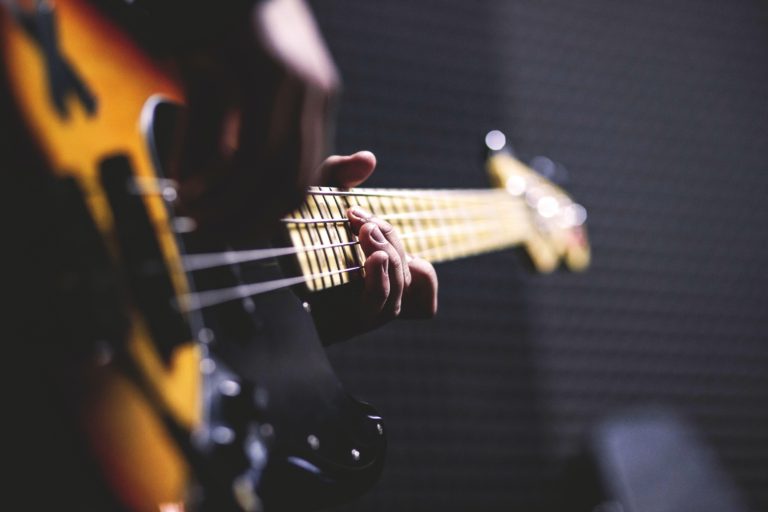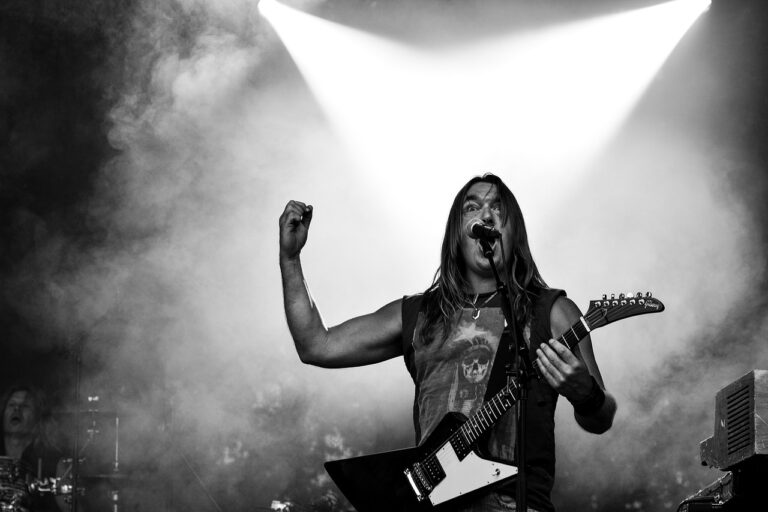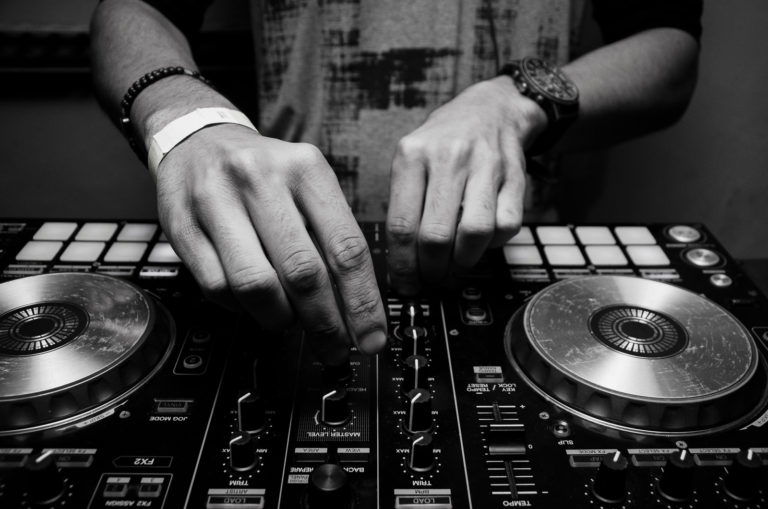Who Are The Big 4 of Punk?
If you’ve dabbled in the realm of heavy metal, you’re probably familiar with the “big four” of thrash. But when it comes to punk, what bands stand on the podium of influence? This is a contentious topic, so be warned: you may disagree. So, who are the big 4 of punk?
The Clash, Sex Pistols, Ramones, and Misfits are arguably the four most influential punk bands. These bands’ music defined the genre and forever shaped the public perception of punk. Thus, these four stand among the best punk bands ever.
But what is it that makes these bands punk? We’ll go over some of the defining characteristics of punk, alongside what makes these bands the big four of punk.
Where Did the Term “The Big Four” Originate?
If you haven’t heard the term “the Big 4” before, you may be wondering “why four?” or “why not three or five?” Let’s clear that up with a quick history lesson in heavy metal.
The term “The Big Four” came around in the 1980s to refer to four bands: Metallica, Megadeth, Slayer, and Anthrax. These guys pioneered the thrash metal subgenre, which, like punk, embodied rebellious sentiments. With thrash metal being the next major transformation in heavy metal, the leaders of thrash would become inescapable inspirations for future metal bands.
Thus, we think it’s appropriate to define who the big 4 of punk should be. Unfortunately, punk fans haven’t come to as tidy an agreement as metalheads have in deciding who these artists should be.
Big Four Most Influential Punk Bands
If you’re a punk fan, there’s a chance one of your favorite bands didn’t make it into the “big four” we’ve outlined. However, punk is a movement. Many more artists than four shaped the genre.
Nevertheless, we’ve narrowed the big four of punk down to Sex Pistols, Ramones, The Clash, and Misfits for one, big reason. They are the four bands that people bring up in nearly every conversation about punk. Plus, few will argue that these bands are true punk.
Sex Pistols
The Sex Pistols initiated the English punk movement upon forming in 1975. Their edgy style, fashion, and band name undoubtedly shaped the image of punk. Plus, having such an impact in a career span of fewer than three years proves how iconic they were.
Despite being a blip on the musical timeline, the legacy of the Sex Pistols is anything but a blip. It’s tough to understate how important this band was in shaping the punk scene. They’re the very reason we associate punk with downstroke-heavy guitar riffs and teenage rebellion.
Most importantly, other punk bands in this article stood on the groundwork the Sex Pistols built.
Ramones
An all-American punk band formed in New York in 1974, the Ramones fronted the punk movement on the west side of the Atlantic. Many consider these guys the pioneers of punk, having influenced later punk bands in the U.K., including Sex Pistols. They delivered fast, fierce, three-chord guitar melodies that became punk’s signature sound.
Tommy Ramone, the band’s drummer, was very deliberate in “dumbing-down” song structure. He intended to present something in stark contrast to complicated rock ballads by fronting the punk movement. He gave the Ramones as a band that did things differently by saying no to flashy solos. The novelty paid off as dozens of more bands followed in the Ramones‘ footsteps.
The Clash
If you’ve ever debated between staying or going somewhere, there’s a high chance you thought about The Clash. Everybody knows that if you go, there will be trouble, but if you stay, there will be double.
Some may say that The Clash became too popular to be punk with their extensive radio play. However, their immense impact in shaping the punk genre makes them irrefutably one of the most influential punk bands ever.
The Clash debuted in London in 1976 after supporting the Sex Pistols in a Sheffield nightclub. They’d become leaders of the original wave of British punk from there. Band members chose sharp, military-cut clothes to support the feeling of punk. In both their playing and their clothes, their stylistic choices influenced nearly every punk band to come.
Additionally, they made a bold decision to incorporate ska and reggae into punk. This transformation of a formerly rock-dominant genre made the sound we associate with punk from the late 70s and 80s.
Misfits
The misfits don’t quite fit the other punk bands we’ve mentioned. Firstly, they formed a distinct subgenre no punk band had done before: horror punk.
The band got together in 1977 in New Jersey when punk was taking off. Having been later to the game than the other three bands, Misfits needed to do something different to stand out. They created horror punk by combining the central qualities of punk, like profane lyrics and simple, speedy riffs, with heavy-metal-like themes.
Lyrically, Misfits didn’t touch politics nearly as much as other punk bands. Instead, they imbibed different punk themes, including anger, with more macabre topics.
What Does Punk Sound Like?
When people think of punk, they think of a few characteristics.
- Muddy, downstroke-heavy guitar riffs
- Rebellious lyrics written by pissed-off teenagers
- Garage band quality vocals
While these sound like stereotypical judgments, there’s some truth to these qualities. Especially when it comes to earlier bands, the first punks didn’t have access to expensive recording equipment. They made do with what they could find on sale at pawn shops or from their friends’ garage. Additionally, most punk rockers didn’t desire to nail down technique.
However, none of these things are derogatory marks on the genre. Instead, they encapsulate the rough-and-tumble life of punk artists and fans. Before punk, artists like Jimi Hendrix, The Who, and Led Zeppelin didn’t appeal to all rock fans. Plenty of teenagers preferred to do without the solos and ballads. Thus, including Tommy Ramone, young people created punk bands to cut out unneeded musical complexities.
Punk came along to deliver the message without the fluff. Thus, the stereotypical punk song uses only a few chords, basic basslines and cuts to the end within one to two minutes. In other words, punk is the opposite of “Stairway to Heaven.”
Punk vs Pop-Punk
Here’s a word of caution when you meet punk fans. Do not, under any circumstances, say the words, “Green Day is my favorite punk band!” Why? You’ll either get aggression or a lecture about the difference between real punk and pop punk.
To save yourself from that, go ahead and familiarize yourself with the key differences.
| True Punk | Pop-Punk | |
| Music style | Muddy, aggressive, simplistic | Melodic, catchy, singable |
| Lyrics | Rebellion, anger, political themes, drug use | Love, happiness, sorrow, other pop song themes |
| Radio Play | Low; popularity flies in the face of punk’s image | Very high; pop-punk bands among the wealthiest, most successful of all time |
| Band Examples | Sex Pistols, The Clash, Ramones, NOFX, Bad Religion, Misfits, Rancid | Green Day, Blink-182, The All-American Rejects, Sum 41, Paramore, Weezer |
However, there are many similarities between true punk and pop-punk that might be part of the confusion. For example, both genres use basic, straightforward chord progressions. Neither genre will feature a 3-minute-long guitar solo (or even be three minutes long). And there’s no doubt that pop-punk is heavily influenced by the works of actual punk bands.
Punk Subgenres
Any successful music genre worth its salt is inevitably going to develop subgenres. Because punk is just as much a movement as a music style, the guidelines set by the big four of punk have encouraged a variety of exciting punk subgenres.
Horror Punk
Pioneered by Misfits, horror punk is one of the most notable subgenres of punk. In comparison to traditional punk (as weird a phrase), horror punk adds gothic themes to lyrics and band wardrobe. Thus, some people like to call the genre “gothic punk.”
Additionally, horror punk usually drops political lyrics and channels raw anger. A horror punk band wants to frighten you in the best way possible, not tell you who to vote for.
Some popular horror punk bands to follow in the Misfits‘ footsteps include Blitz Kid, Murderdolls, and Wednesday 13.
Anarcho Punk
While punk music is rebellious by default, anarcho-punk takes things further. As the name of the subgenre suggests, anarcho-punk emphasizes the sentiments of anarchists. Lyrics are often political, with muckraking a common goal of anarcho-punk songs.
Consequently, people tend to picture anarcho-punk fans as disruptive vandals who say things like “down with the system” and do things like throw rocks at the White House., which is a slight exaggeration. Most anarcho-punk bands are just trying to speak out against corruption.
Popular anarcho-punk bands include Chumbawamba, Crass, and Subhumans.
Skate Punk
Parents have long associated skating with “damn teenage punks.” Indeed, punk music and skating have become integral parts of the punk movement. Skate punk focuses specifically on lyrics about, well, skating.
Few punk bands sing about skating and nothing else. However, many punk rock band members are passionate skaters. Sometimes love for the pavement makes its way into lyrics. After all, punk is all about uncomfortable topics. There’s nothing quite as awkward as a compound fracture caused by a skating miscalculation.
Popular skate punk bands include Suicidal Tendencies, Gang Green, and NOFX.
Straight Edge Punk
Punk music covers some less-than-wholesome topics. Doing hard drugs, having unprotected sex, and punching people are synonymous with punk’s image unless we’re talking about straight edge punk.
Straight edge punk came about to rebel against the punk rebellion. Thus, straight edge punk bands avoid alcohol, drugs, and tobacco. Despite the differences, straight edge punk retains gravelly, fierce guitar riffs. However, you’ll instead hear oddly-placed lyrics about doing the right thing.
Popular straight-edge punk bands include Minor Threat, Have Heart, and Teen Idols.

